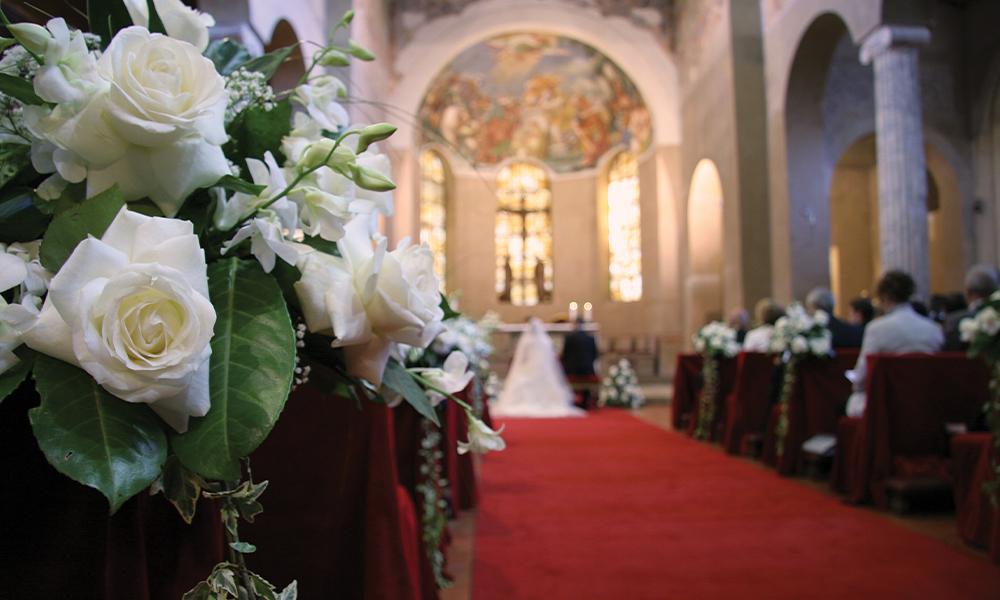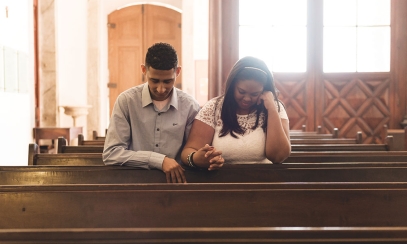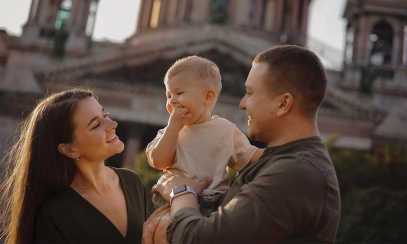
What’s Sacramental About Marriage?
DEAR FATHER KERPER: I learned about all the sacraments, but matrimony always puzzled me. First, all the sacraments were instituted by Christ. I get that. But when did he set up matrimony? I can’t think of any time he told people to get married.
Second, I’ve never understood why matrimony is a sacrament at all. What exactly does it do?
DEAR FATHER KERPER: I learned about all the sacraments, but matrimony always puzzled me. First, all the sacraments were instituted by Christ. I get that. But when did he set up matrimony? I can’t think of any time he told people to get married.
Second, I’ve never understood why matrimony is a sacrament at all. What exactly does it do?
Great questions! You’ve hit upon an embarrassing fact: the Church says much about marriage, but little about its divine origin and sacramental nature.
Let’s begin with matrimony’s origins.
Unlike every other sacrament, matrimony originates in nature rather than in a distinct creative act of Christ. We see this clearly in two texts from Genesis. The first appears in Chp. 1: “God created humankind in his image; in the image of God he created them; male and female he created them.” (Gn 1:27) The second has even more clarity: “A man leaves his father and mother and clings to his wife, and they become one flesh.” (Gn 2:24)
These texts show that God created human beings and marriage simultaneously. Adam and Eve, then, were never “single,” but always “one flesh” from the beginning.
Jesus reaffirmed the sanctity of this original marriage bond while discussing divorce. He repeated the two texts from Genesis and then added, “Therefore, what God has joined together, man must not separate.” (Mt 19:6)
Even pre-Christian marriage acted as a quasi-sacrament in that it faintly symbolized God’s permanent “marital bond” with Israel. References to this “mystical marriage” run through the Hebrew Scriptures. These texts guided the early Church toward a deeper understanding of marriage as a Christian sacrament, notably that the permanent bond between a man and a woman symbolizes the permanent bond between Christ (the bridegroom) and the Church (the bride).
Though Christ never spoke directly about matrimony as a sacrament, St. Paul surely did.
To the Ephesians he wrote: “This is a great mystery, and I am applying it to Christ and the church.” (Eph 5:32) The English word “mystery” here translates to the Greek word mysterion, which St. Jerome rendered as sacramentum. Surely, then, the early Church quickly recognized marriage as a true sacrament.
Even so, the core of Christian marriage rites and laws remained somewhat fluid, varying greatly until about 350 A.D. For example, in some places the father of the bride, rather than a priest, officiated at the church door; and civil marriages were even accepted and blessed.
As nuptial rites became more uniform, matrimony became closely linked with the celebration of the Eucharist. This custom, which some theologians regarded as absolutely essential, emerged from the Church’s discovery of the remarkable similarity between matrimony and the Eucharist.
Consider the Eucharist: At Mass bread and wine — natural objects — become the body and blood of Christ through the power of the Holy Spirit and the words of consecration uttered by the priest. Through this transformation of bread and wine, Christ extends his living presence into the world and unites himself with believers who partake of the Eucharist.
Now think about matrimony: The Lord’s statement that “two become one flesh” rightly describes the bodily and spiritual union of men and women sanctified by the sacrament. Whereas the Eucharistic action transforms bread and wine into sacred things, matrimony transforms men and women into living icons of the Lord’s “marriage” with the Church.
But how does matrimony act symbolically?
Here we must expand our vision of married people we know. Like the Eucharist, we must look beyond the appearances of bread and wine to see the reality of the body and blood of Christ. The same applies to matrimony: We must see married people as sanctified and transformed by the sacrament. They do indeed become an image of “two who become one flesh.”
This union of “one flesh” occurs in and through the marital act, which remains hidden to public view. How, then, can anyone ever see what marriage symbolizes?
Simple. Get to know people who have been married for a very long time. Learn their stories; gaze upon them.
Priests get to see the Christ-Church “icon” rather often, especially among men and women who endure long or intense forms of suffering. Over the years, I have seen truly heroic marital love mutually shared by married people. They had endured much. They had remained absolutely faithful in love. Amazing!
We will see the durability of matrimony especially at the funerals of people whose long marriages have survived tragedies, disappointments and even infidelity.
You also asked: “What does matrimony do?” A lot. It provides married people with God’s essential help to preserve the marital bond.
Here matrimony does what every other sacrament does: it bestows “sacramental graces” — divine help — linked to each specific sacrament. In the case of matrimony, the Lord graciously helps people to live a common life, to raise children, to bear with the rough edges of one’s spouse, to have endless patience and to avoid temptations against fidelity. These “sacramental graces,” intrinsic to matrimony, build up and sustain beautiful marriages. They transform mere civil contracts into holy relationships that constantly manifest the love and fidelity of Christ toward humanity.
As a sacrament, then, matrimony differs enormously from a civil ceremony, which is a state-sanctioned contract. Matrimony alone establishes and sanctifies a three-way bond: husband, wife and God. Such a partnership, infused with God’s presence and grace, is built to last for a lifetime, not for the wedding day alone.
Father Michael Kerper is a pastor in the Diocese of Manchester, New Hampshire.



